Choosing Fabric for Custom Projects: A Guide to the Best Materials
Starting a new sewing project and fabric choices feel endless? Small businesses, DIYers, and crafters often get lost in fabric options. Which fabric is right for your project? Fear of choosing wrong and wasting money is real!
But selecting fabric doesn’t have to be stressful. This guide simplifies fabric selection for any customization project. Understand fabric types, drape, care, and more. Gain expert tips to confidently choose the perfect fabric every time. Avoid costly mistakes and achieve professional, beautiful results – guaranteed!
1. Key considerations for fabric selection
Choosing the right fabric is fundamental to any customization project. Material impact on look, feel, function, and longevity is immense.
1.1 Understanding your project’s purpose
Before choosing fabric, define your project goals. Understanding the end-use is crucial. Is your project functional, like clothing for daily wear or a sturdy handbag? Match your fabric to its function. For warmth, choose fleece. For summer dresses, consider lightweight linen. For items needing durability, canvas is a strong choice. Think about end-use scenarios: how often will it be used? Will it need frequent washing? Will it be exposed to the outdoors? For example, durable fabrics like canvas are ideal for tote bags, while delicate silk is perfect for formal wear.
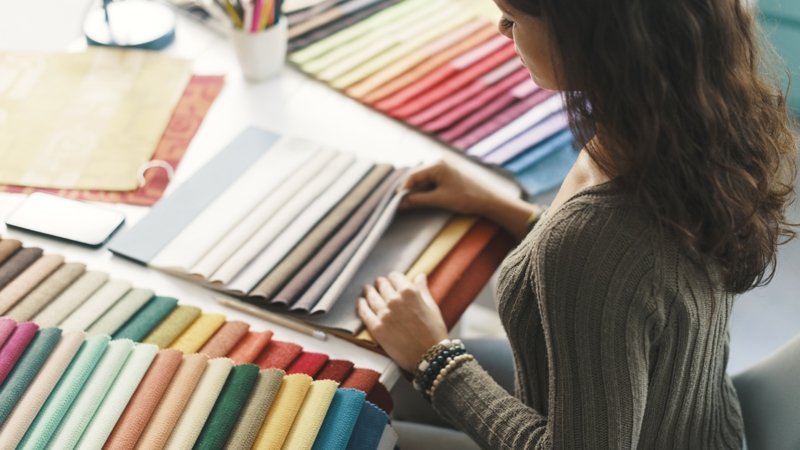
1.2 Assessing fabric properties: Weight, drape, texture & flexibility
Understanding fabric properties is essential for successful customization. Consider fabric weight: is it light, medium, or heavy? Fabric weight affects both the feel and function. Lightweight fabrics are airy and flowy, ideal for summer garments. Heavy fabrics provide structure and substance, suitable for jackets or bags. Fabric weight also impacts sewing; lightweight fabrics can be slippery to handle, while heavy fabrics can be bulky under the needle.
Fabric drape describes how a fabric falls and flows. Drape is crucial for different garment styles. Flowy dresses benefit from fabrics with good drape, like silk or rayon. Structured jackets, however, need fabrics with less drape, such as wool or canvas, to hold their shape. To assess drape, try drape tests: hold the fabric up and visualize how it falls to determine its suitability for your design.
Fabric texture, whether smooth, rough, or napped, adds visual appeal and surface interest. Texture also has functional implications, affecting the tactile experience and comfort against the skin. Consider texture for both the visual and tactile aspects of your final product.
Finally, consider fabric flexibility, or stretch. Differentiate between knit and woven fabrics. Knit fabrics, like jersey, are known for their stretch, while woven fabrics like cotton or linen are generally rigid. Choose knits for projects needing stretch, like t-shirts, and wovens for structured items like curtains. For woven fabrics, remember the bias cut can offer slight stretch, and understand the stretch direction in knits for optimal pattern placement.
1.3 Practical considerations: Durability, care, and skill level
Beyond aesthetics, practical considerations are vital. Fabric durability is key for items intended for frequent use. Consider wear and tear resistance. Abrasion resistance, the ability to withstand rubbing, is important for items like bags or upholstery.
Also, consider pilling, the formation of small balls on the fabric surface, which can affect appearance over time. Match fabric durability to the intended frequency of use and expected wear conditions. Fabric care and maintenance are also important.
Consider care requirements: is the fabric machine washable, hand wash only, or dry clean? Think about ironing needs and the potential for shrinkage. Pre-washing fabrics helps prevent shrinkage. Consider the user’s lifestyle and care preferences when choosing fabric.
Finally, your sewing skill level should influence fabric choice. Beginner-friendly fabrics like cotton are easy to handle and sew. More challenging fabrics like silk, satin, or chiffon can be slippery and delicate, requiring more advanced fabric handling skills. Start with easier fabrics like cotton to build confidence and practice sewing techniques, then gradually progress to more challenging materials as your skills develop.
2. A guide to common fabric types for customization
Choosing the right fabric unlocks your project’s potential. Explore these common fabric types to make informed customization choices.
2.1 Natural fibers: Cotton, linen, silk, wool
Natural fibers offer comfort and classic appeal. Let’s explore cotton fabric, linen fabric, silk fabric, and wool fabric, all essential natural textiles.
Cotton:
- Properties: Cotton fabric is known for being breathable and versatile. It’s absorbent and relatively easy to sew, making it beginner-friendly.
- Uses: Ideal for everyday items like t-shirts and casual dresses. Also used for quilting, home décor, and linings due to its versatility.
- Pros: Cotton is comfortable and widely available, making it an affordable choice for many projects.
- Cons: Cotton wrinkles easily and can shrink, and it’s generally less durable than synthetic fibers.
- Expert Advice: Remember that different cotton types exist. Lawn cotton is lightweight, quilting cotton is tightly woven, and jersey knit offers stretch – each best for different projects.
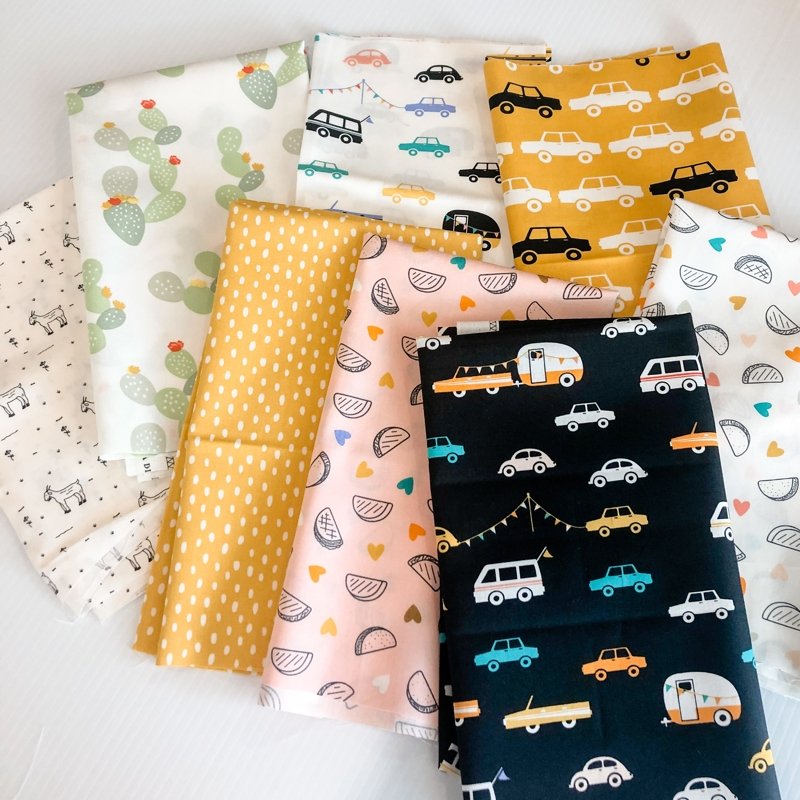
Linen:
- Properties: Linen fabric is prized for its breathability and strength. It’s absorbent and becomes softer with each wash, improving with age.
- Uses: Excellent for summer clothing due to its breathability. Also popular for home textiles like tablecloths and curtains.
- Pros: Linen is highly breathable and durable. It’s also considered an eco-friendly option due to flax cultivation.
- Cons: Linen wrinkles very easily and can feel initially stiff. It’s also typically more expensive than cotton.
- Expert Advice: Consider linen blends like linen-cotton or linen-rayon. These blends offer reduced wrinkling and improved drape while retaining linen’s desirable qualities.
Silk:
- Properties: Silk fabric is synonymous with luxury. It’s incredibly smooth and drapey, with a beautiful luster. Despite its delicate appearance, silk is surprisingly strong for its weight.
- Uses: Primarily used for formal wear and special occasion garments. Also popular for scarves, lingerie, blouses, and luxurious linings.
- Pros: Silk offers unparalleled drape and a luxurious feel. It’s also a strong natural fiber despite its fineness.
- Cons: Silk is delicate and expensive, requiring special care like hand washing or dry cleaning. It can also snag easily.
- Expert Advice: Be aware that various silk types exist. Charmeuse is smooth and lustrous, chiffon is sheer and flowing, and crepe de chine has a slightly textured surface – choose based on your project’s needs.
Wool:
- Properties: Wool fabric is known for its warmth and insulation. It’s also durable and naturally wrinkle-resistant, with good absorbency.
- Uses: Ideal for warm outerwear like coats and sweaters. Also used for suits, blankets, and upholstery due to its durability and warmth.
- Pros: Wool is exceptionally warm and durable. It’s naturally wrinkle-resistant and offers a luxurious feel, especially merino and cashmere wools.
- Cons: Wool can shrink and felt if not cared for properly. It often requires special care like hand washing or dry cleaning. Some wool types can be itchy for sensitive skin, and wool is susceptible to moth damage.
- Expert Advice: Remember that wool types vary significantly. Merino and cashmere are incredibly soft, while tweed and lambswool are more robust and have different care requirements.
2.2 Synthetic fibers: Polyester, nylon, acrylic
Synthetic fibers, or man-made textiles, offer different performance characteristics. Let’s examine polyester fabric, nylon fabric, and acrylic fabric.
Polyester:
- Properties: Polyester fabric is prized for its durability and wrinkle resistance. It’s also water-resistant, affordable, and colorfast, holding dye well.
- Uses: Commonly used for activewear and outerwear due to its performance qualities. Also found in linings, upholstery, and fleece fabrics.
- Pros: Polyester is durable and easy to care for, requiring minimal ironing. It’s affordable and widely available in many forms.
- Cons: Polyester is less breathable than natural fibers and can sometimes feel less luxurious against the skin. It can also retain odors and is not biodegradable.
For a more sustainable choice, consider recycled polyester fabric. It also blends well with natural fibers, enhancing the properties of both.
Nylon:
- Properties: Nylon fabric is exceptionally strong and elastic. It’s water-resistant and abrasion-resistant, yet surprisingly lightweight.
- Uses: Often used for activewear and outerwear due to its durability and water resistance. Also found in swimwear, hosiery, bags, and tents.
- Pros: Nylon is very strong and durable, as well as water-resistant and lightweight, making it ideal for performance applications.
- Cons: Nylon is less breathable than natural fibers and can melt at high heat. It’s also not biodegradable.
Nylon blends are frequently used to enhance fabric properties. For example, nylon blends often improve stretch and durability in performance wear fabrics.
Acrylic:
- Properties: Acrylic fabric is designed to mimic wool, offering a soft, wool-like feel. It’s warm and wrinkle-resistant, as well as affordable and lightweight.
- Uses: Frequently used for sweaters and blankets as a wool alternative. Also common in craft projects and faux fur fabrics.
- Pros: Acrylic is an affordable wool alternative, offering a soft feel and easy care. It’s also wrinkle-resistant and lightweight.
- Cons: Acrylic is less breathable than wool and can pill easily with wear. It’s not as durable as wool and can generate static. Like other synthetics, it’s not biodegradable.
While acrylic is budget-friendly, be mindful of quality differences. Lower-quality acrylic may not be as breathable or long-lasting as natural fibers or higher-grade synthetics.
2.3 Blended fabrics: Combining the best of both worlds
Blended fabrics, or fabric blends, are created by combining different fibers to achieve specific properties. Cotton blends are very common, as are linen blends and other mixed fibers.
- Poly-cotton: A classic blend combining polyester for durability and wrinkle-resistance with cotton for breathability and comfort. Commonly used for shirts, bedding, and everyday garments.
- Linen-rayon: This blend combines linen for breathability and texture with rayon for improved drape and reduced wrinkling. Often used for summer dresses, blouses, and lighter garments.
- Wool-silk: A luxurious blend combining wool for warmth and structure with silk for added softness and luster. Used in high-end luxury garments and special occasion wear.
3. Customization techniques and fabric compatibility
Fabric choice is intrinsically linked to your customization method. Understanding fabric compatibility ensures successful and beautiful results across various techniques.
3.1 Fabric for printing (screen printing, digital printing, heat transfer)
Choosing the right printing fabrics is crucial for different print methods. For fabric for screen printing, cotton and cotton blends are generally best. Screen printing ink sits on top of the fabric and works well with thicker, more absorbent materials.
Fabric for digital printing, specifically Direct-to-Garment (DTG) printing, is ideally cotton, but also works well with rayon and silk. DTG ink penetrates the fabric fibers, making it best for detailed designs on smoother surfaces.
For fabric for heat transfer, including vinyl and sublimation, compatibility varies. Heat transfer vinyl works on most fabrics, offering great versatility. However, fabric for heat transfer using sublimation techniques requires polyester or high poly-blends for the dyes to properly bond.
When selecting printing fabrics, consider the fabric surface – smoother surfaces are better for detailed prints. The fabric weave also matters; a tight weave provides better print clarity. Always test ink adhesion on a fabric scrap first to ensure compatibility and desired print quality.
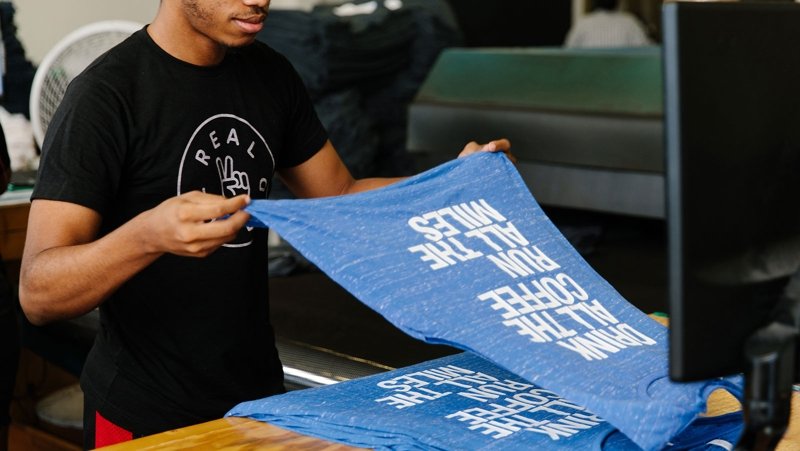
3.2 Fabric for embroidery (machine embroidery, hand embroidery)
Selecting embroidery fabrics depends on the desired look and embroidery method. For both fabric for machine embroidery and fabric for hand embroidery, stable fabrics for embroidery are generally preferred. Cotton, linen, denim, and canvas are excellent choices due to their inherent stability, providing a solid foundation for stitches.
Knit fabrics like jersey and fleece can also be used as embroidery fabrics, but they require proper stabilizers to prevent stretching and distortion during the embroidery process. Medium-weight fabrics are often the easiest to embroider, offering a good balance of stability and needle penetration.
Consider the fabric weave; a tight weave generally yields better results for intricate embroidery designs. Choosing the right stabilizer type is crucial; select stabilizers based on fabric weight and stretch.
3.3 Fabric for sewing (garments, accessories, home decor)
Choosing sewing fabrics depends heavily on the intended project. For fabric for garments, consider drape, comfort, and the intended style of the clothing. For casual wear, cotton and comfortable blends are excellent choices.
For formal wear, consider luxurious fabrics like silk or drapey rayons. For summer clothes, breathable linen or lightweight cottons are ideal. For fabric for accessories like bags and hats, focus on durability and structure. Sturdy fabrics like canvas, denim, and upholstery fabrics are well-suited for bags and hats that need to hold their shape.
For fabric for home decor items like curtains and pillow covers, consider drape, durability, and lightfastness, especially for items exposed to sunlight. Good choices include cotton blends, linen, and durable upholstery fabrics.
When selecting sewing fabrics, always consider fabric drape in relation to the garment style you envision. Durability is paramount for accessories and upholstery, while lightfastness is crucial for items exposed to the sun.
4. Sustainability and ethical fabric choices
Choose fabrics responsibly. Sustainable and ethical options are increasingly important for conscious customization.
4.1 Understanding sustainable fabric options
Sustainable fabric options minimize environmental harm. Organic cotton, grown without harmful chemicals, is better for the planet and skin. Recycled polyester (rPET) reduces plastic waste. Hemp fabric is a durable, sustainable choice needing less water and pesticides.
Bamboo is renewable and soft, but check for closed-loop processing. Linen requires less resources than cotton and is biodegradable. For verification, seek certifications like GOTS (Global Organic Textile Standard) for organic textiles and Oeko-Tex for harmful substance testing.
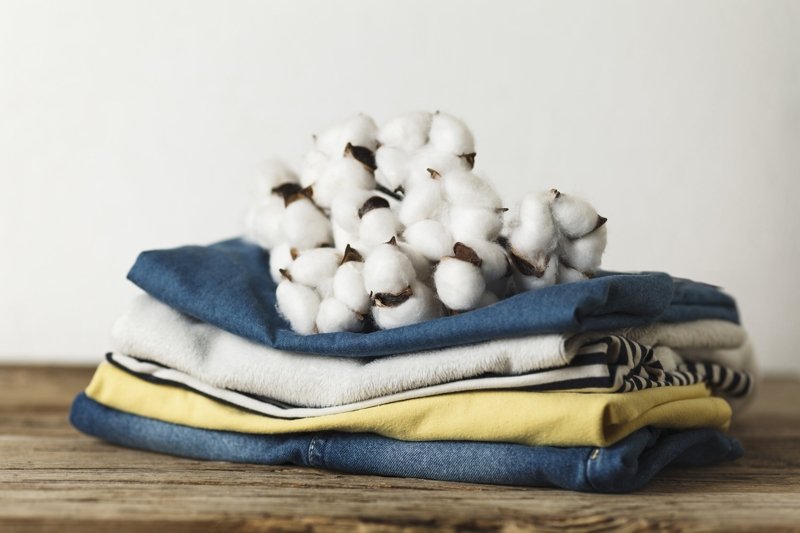
4.2 Ethical considerations in fabric sourcing
Ethical fabric sourcing prioritizes fair labor. Fair trade fabrics ensure fair wages and safe conditions for workers. Support brands with transparent supply chains for accountability. Look for Fair Trade certifications. Consider vintage/upcycled fabrics to reduce new production demand. Choose brands with ethical sourcing policies to support responsible textile production and consider the social impact of your fabric choices.
5. Tips for buying fabric like a pro
Fabric shopping can be enjoyable and efficient with the right approach. Follow these tips to buy fabric like a seasoned professional.
5.1 Preparing for your fabric shopping trip
Proper fabric shopping preparation is key to a successful trip. Before you go, gather your project details: bring your pattern (if using one), design sketches, relevant measurements, and a clear list of fabric requirements.
If you need to match existing items or color schemes, bring color swatches of existing garment colors or your project’s color palettes. Decide whether you’ll shop online vs. in-store. Online fabric stores offer a wider selection and convenience, while in-store shopping allows you to touch and feel the fabric directly.
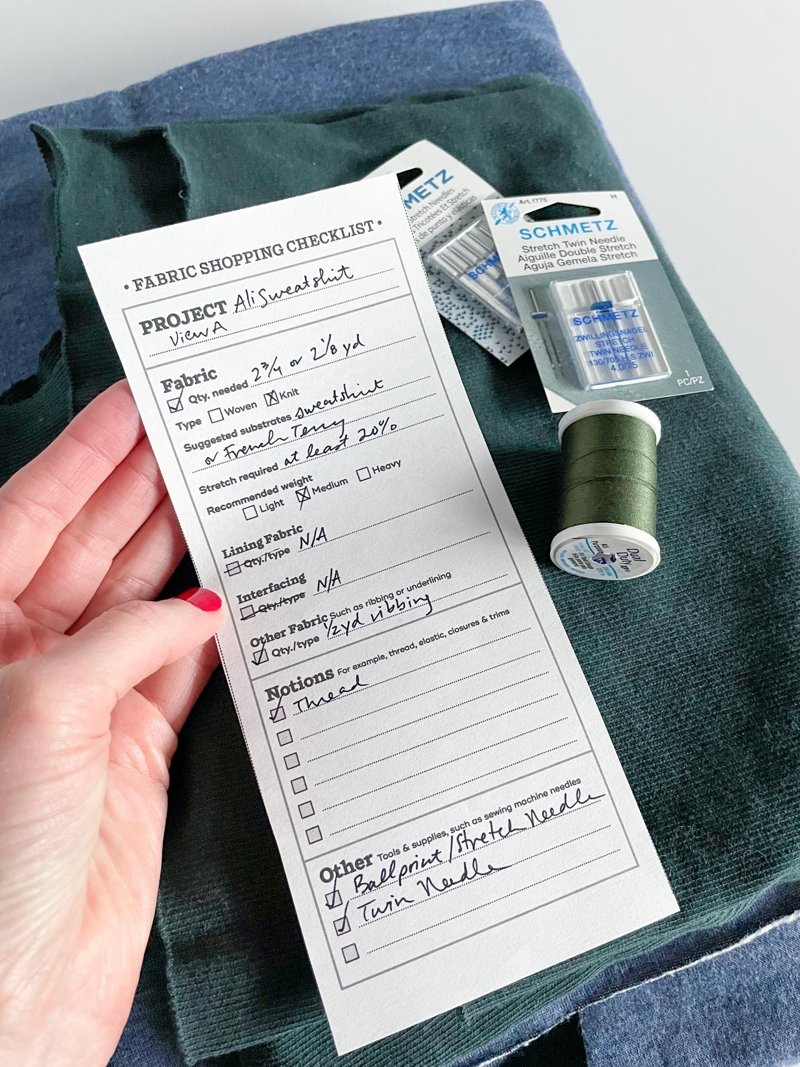
5.2 Evaluating fabric quality in-store
When choosing fabric in store, take time for fabric quality check. Touch and feel the fabric to assess its texture, drape, and weight. Check drape by holding the fabric up to see how it falls and moves. Examine weave closely, looking for evenness and tightness – a tight, even weave generally indicates higher quality.
Inspect for flaws such as pulls, stains, or uneven printing, especially on sale or discounted fabrics. Perform a gentle pull test: gently pull the fabric on the bias to check its stretch and recovery (for knits) or its strength and resistance to tearing (for wovens).
5.3 Calculating fabric yardage and budgeting
Accurate fabric yardage calculation and fabric budgeting are essential to avoid overspending and ensure you have enough material. Start by using pattern yardage charts. Pattern envelopes usually provide recommended fabric quantities based on garment size and fabric width.
For fabric budgeting, estimate fabric cost by comparing prices. Check prices at different fabric stores and online retailers to find the best deals. When buying patterned fabrics, consider repeats and nap. For patterned fabrics, you’ll likely need extra yardage for pattern matching to ensure a cohesive look.
Fabrics with a nap, like velvet or corduroy, require a one-way layout, also increasing yardage needs. Always add extra fabric to your calculated yardage. It’s wise to buy slightly more than needed to account for potential mistakes during cutting, fabric shrinkage after pre-washing, or to have extra fabric on hand for future repairs or alterations.
6. FAQs about choosing the right fabric for customization projects
6.1 What is the easiest fabric to sew for beginners?
For those new to sewing, cotton is generally considered the easiest fabric to sew. Cotton has a stable weave and minimal stretch, making fabric handling straightforward. It’s not too slippery and holds its shape well, which is forgiving for beginners still developing their sewing skills.
6.2 How do I know if a fabric has good drape?
To determine if a fabric has good drape, perform a simple drape test. Hold the fabric up and observe how it falls. Fabrics with good drape will flow smoothly and gracefully, forming soft, fluid folds. In contrast, fabrics with poor drape will be stiff and hang rigidly, without much movement or flow.
6.3 What’s the difference between knit and woven fabrics?
The fundamental difference lies in their construction. Woven fabrics are made by interlacing two sets of yarns at right angles, similar to a basket weave. This interlacing creates a stable fabric that is generally less stretchy. Knit fabrics, on the other hand, are made by interlocking loops of yarn. This looped construction results in a fabric that is inherently stretchy and flexible.
6.4 How do I care for delicate fabrics like silk or chiffon?
Delicate fabrics such as silk and chiffon require special fabric care. They often require hand washing or dry cleaning to maintain their delicate nature. When washing, use gentle detergents and cool water. Avoid harsh squeezing or wringing, which can damage the fibers. Air dry delicate fabrics flat or hang them away from direct sunlight to prevent damage and maintain their quality.
6.5 Where can I find sustainable and ethical fabrics?
Finding sustainable fabrics and ethical fabrics is becoming increasingly easier. Look for online retailers specializing in sustainable fabrics; many online stores now curate collections of eco-friendly textiles. Check local fabric stores for organic or recycled options; inquire about their sourcing and sustainable offerings.
When shopping, search for fabrics with recognized certifications like GOTS or Oeko-Tex, which verify environmental and ethical standards. Finally, research brands that prioritize ethical sourcing and transparent supply chains to support companies committed to responsible textile production.
Read more:
Just as carefully choosing fabric lays the foundation for your customization projects, professional clothing branding elevates the final product. That’s where Packlove comes in. As a brand with over 8 years of experience in garment labels and custom tags, Packlove is dedicated to supporting clothing businesses and DIY creators alike.
We specialize in providing custom labels and tags for clothing projects, helping you enhance your brand identity with every piece. Packlove offers expertise in various label design and tag printing technologies, providing a wide range of materials and design options to perfectly match your chosen fabrics and customization style.
We understand that professional, high-quality garment labels and brand labels are the finishing touch that completes your customized clothing, adding value and reinforcing your brand image.
Visit Packlove today to explore our range of custom label and tag solutions for your clothing projects. Contact us for expert consultation on label design and branding to perfectly complement your fabric choices!






















